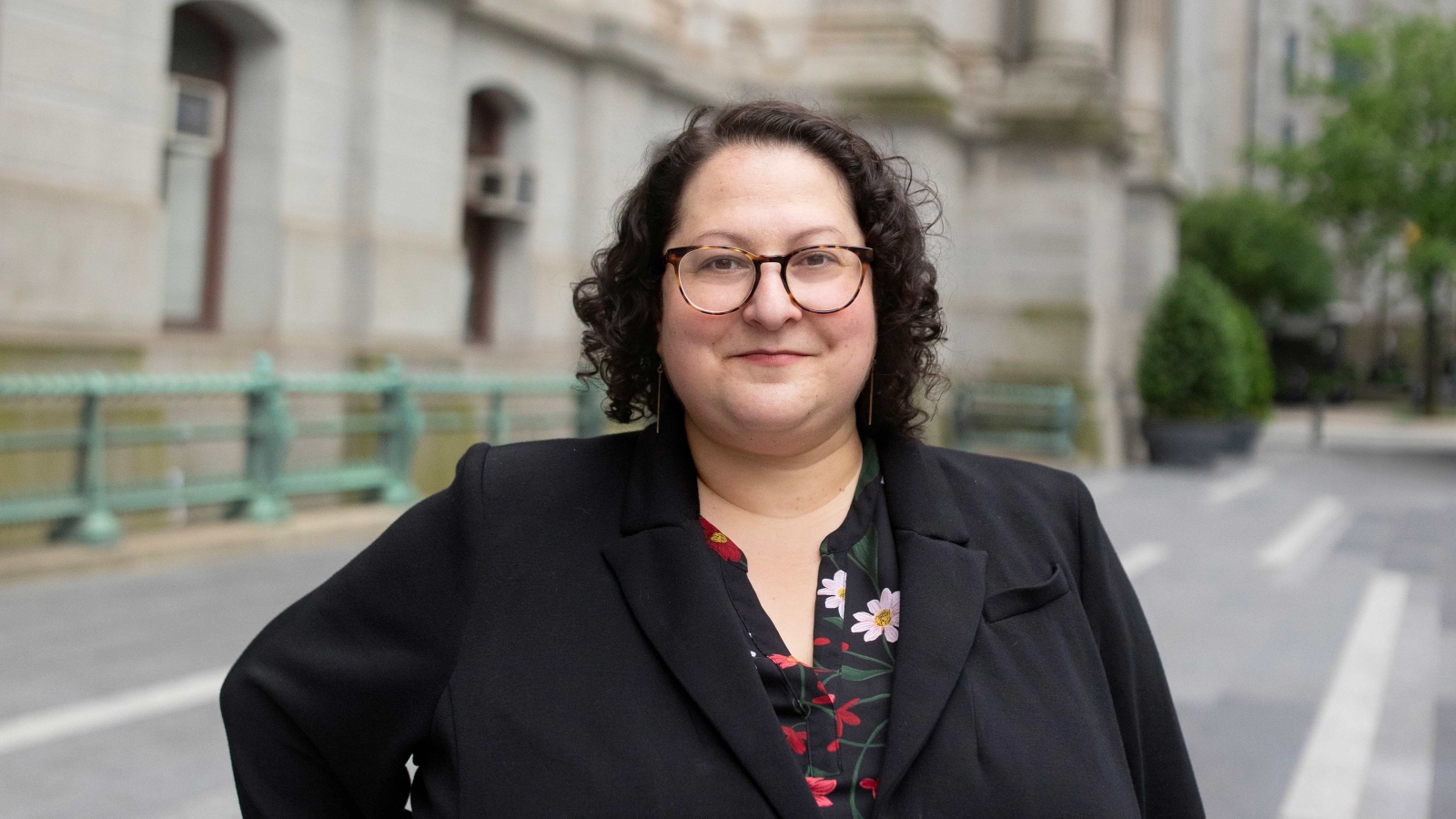On the Grid
Emily Schapira, C’02, WG’09, CEO of the Philadelphia Energy Authority, is fighting climate change and creating thousands of local jobs along the way.

During her second year at Penn, Emily Schapira, C’02, WG’09, puzzled out her ideas about social impact in a seminar called Community Economic Development.
“That was first place that I thought deeply about my role in the universe,” she says of the class, taught by Andrew Lamas of the Urban Studies Program. “Not every space is for me, because the people who own that space may not want or need me there. I learned to not only respect the local knowledge ingrained in communities all over—especially here in Philly—but to look for my role. What can I uniquely do that is most helpful?”
She would revisit that question in 2015, when then Philadelphia City Council President Darrell Clarke approached her with one of his own: Is there something we can do with energy and jobs?
By then, Schapira was a firm believer in the untapped potential of the city’s energy sector. Through advocacy for low-income home energy programs and stints in corporate sustainability at Wharton, Verizon, and Intel, she learned the lay of the land. In 2011, she was appointed to the Philadelphia Energy Authority (PEA) board, tasked with helping the city advance its sustainability ambitions. And with her degrees from Penn, she had the business know-how to make it happen. She told Clarke yes.
Her idea centered on the tandem goals of harnessing Philadelphia’s unique energy landscape and designing equitable programming that brings low-income residents into the fold and out of poverty. “Climate change is everybody’s problem. It affects low-income communities the hardest, and they are the least equipped to deal with the consequences,” says Schapira, now PEA’s president and CEO. “Working with historically disinvested communities is not an afterthought—it’s the first thought. Those are the folks who will lead the revolution.”
She returned to Clarke with a bold vision, now known as the Philadelphia Energy Campaign, a 10-year plan to invest $1 billion in clean energy projects and create 10,000 jobs. The campaign would target city-owned buildings, public schools, low-income housing, and small businesses. Council greenlighted her proposal in 2016. She joined PEA full time and got to work.
Seven years in, the work is ahead of schedule with 7,600 jobs created and $904 million in public and private funding invested. At the Philadelphia Museum of Art, the top energy user among city-owned buildings, PEA-facilitated system upgrades have reduced electricity use by 23 percent. A project to convert all 140,000 city streetlights to LEDs is underway, and a rural Pennsylvania solar plant is contracted to power 22 percent of Philadelphia municipal buildings. Workforce development programs are preparing Philadelphia high schoolers and adults to do the electrical, HVAC, and solar installations required for these projects.
But Schapira is proudest of helping city residents access clean energy in their homes. “Consumer programs are near and dear to my heart,” she says, thinking of her first job after Penn, at the Public Interest Research Group. An international relations and urban studies major, Schapira credits her liberal arts education with enabling her to jump into what turned out to be a transformative experience. Rather than lobbying or writing reports, Schapira directed a co-op that obtains discounted home heating oil for low-income residents.
Each of her five winters on the job, her voicemail overflowed with requests. “People’s teeth were chattering inside their homes,” she remembers. “They had a hole in their roof, or they had a drafty home or other major issues that required so much heating oil.”
PEA’s consumer programs like Built to Last and Solarize Philly are designed with this in mind. Leveraging partnerships with organizations that offer home repair assistance, Built to Last coordinates streamlined, holistic home improvements for low- and moderate-income Philadelphians. “In the end,” she says, “we’re left with a home that is not just band-aided for a specific problem, but safe, healthy, and preserved as affordable housing for that family to create generational wealth.” Solarize Philly is now the largest solar marketplace of its kind in the country, with more than 2,700 households served, almost half of which are low and moderate income.
“From the first moment of my career, I was looking for ways to solve the equity problem,” Schapira says. “I think about that every day, and I’m proud to have real solutions that serve our communities.”



